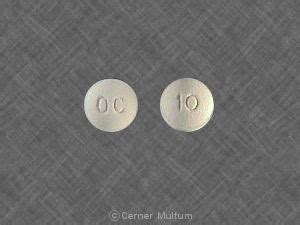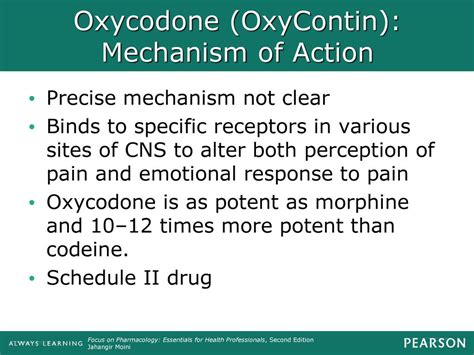Intro
Discover key facts about Oxycontin 10mg, including its uses, side effects, and addiction risks, to understand this potent opioid medication and its impact on pain management and opioid dependence.
Oxycontin, a medication known for its potent pain-relieving properties, has been a subject of interest and concern among medical professionals and the general public alike. Here are some key points to consider when discussing Oxycontin 10mg:
Oxycontin is a brand name for the opioid pain reliever oxycodone, which is used to treat moderate to severe pain. The "10mg" refers to the dosage of oxycodone in each tablet. Oxycontin is designed to release the medication slowly over time, providing extended relief from pain. This is in contrast to immediate-release formulations, which release the medication all at once.
The importance of understanding Oxycontin 10mg cannot be overstated, given its widespread use and the potential risks associated with its misuse. Opioids like Oxycontin have been at the center of discussions about the opioid epidemic, highlighting the need for responsible prescribing practices and patient education. As we delve into the specifics of Oxycontin 10mg, it's crucial to recognize both its therapeutic benefits and its potential for abuse.
Introduction to Oxycontin 10mg

Benefits of Oxycontin 10mg
The benefits of Oxycontin 10mg include its ability to provide sustained pain relief, reducing the need for frequent dosing and potentially minimizing side effects associated with peak drug levels. This can lead to improved patient outcomes, including better pain management and enhanced quality of life. Additionally, the predictable pharmacokinetics of Oxycontin 10mg can make it easier for healthcare providers to titrate the dose to the patient's needs, ensuring that the patient receives the appropriate amount of medication for effective pain relief.Working Mechanism of Oxycontin 10mg

Risks and Side Effects
While Oxycontin 10mg can be an effective tool in the management of moderate to severe pain, it is not without risks. Common side effects include constipation, nausea, vomiting, headache, drowsiness, and dry mouth. More serious risks include respiratory depression, which can be life-threatening, especially when Oxycontin is used in high doses or in combination with other central nervous system depressants. The potential for addiction and dependence is also a significant concern, as with all opioid medications.Steps for Safe Use

Practical Considerations
Practically, the use of Oxycontin 10mg requires careful consideration of the patient's medical history, current medications, and lifestyle. For example, patients with a history of substance abuse may require closer monitoring or alternative treatments. Similarly, patients with certain medical conditions, such as respiratory or hepatic impairment, may need dose adjustments or special precautions.Alternatives and Comparisons

Statistical Data
Statistical data on the use and misuse of Oxycontin 10mg highlight the complexity of the issue. According to various reports, the misuse of prescription opioids, including Oxycontin, has contributed significantly to the opioid epidemic. However, for many patients, Oxycontin 10mg and other opioids remain a vital component of pain management, improving quality of life and functional capacity.Future Directions

Conclusion and Final Thoughts
In conclusion, Oxycontin 10mg is a potent opioid analgesic that offers effective pain relief for many patients but also carries significant risks, including addiction, overdose, and death. As healthcare providers and patients navigate the complexities of pain management, it's essential to approach the use of Oxycontin 10mg with caution, respect, and a commitment to safe use practices. By doing so, we can maximize its benefits while minimizing its harms.What is Oxycontin 10mg used for?
+Oxycontin 10mg is used for the management of moderate to severe pain that requires continuous, around-the-clock opioid therapy for an extended period of time.
How does Oxycontin 10mg work?
+Oxycontin 10mg works by binding to opioid receptors in the brain, spinal cord, and other areas, altering the perception of and response to pain.
What are the risks associated with Oxycontin 10mg?
+The risks associated with Oxycontin 10mg include addiction, overdose, respiratory depression, and other side effects such as constipation, nausea, and drowsiness.
We invite you to share your thoughts and experiences with Oxycontin 10mg, and to ask any questions you may have regarding its use, benefits, and risks. Your engagement and feedback are invaluable in helping us better understand the complexities of pain management and the role of medications like Oxycontin 10mg. Please feel free to comment below or share this article with others who may benefit from this information.
